Description and photos of cicada flies
Content
- Cicada fly
- Cicada fly
- Common Cicada
- Mountain cicada
The cicada fly is an unusual creature of our planet, surprising with its appearance, way of life, development, and emitting sounds. The name of the insect was due to the mass appearance of larvae every 13-17 years. Huge hordes of cubs are selected from under the ground, attacking trees, bushes. A few days turn into imago. In the world there are about 2500 varieties of cicadas. They live mainly in the tropical, subtropical zone. In our area lives 2 species.
Amazing appearance
Cicada has a number of significant differences from common houseflysimilar to other insects. It is called the tadpole because of the large massive head that connects to the sternum. Named as a butterfly, because the shape of the wings in the open state is similar.
- On a large head are placed 2 complex eyes, three simple eyes. The insect sees well, reacts quickly to movement.
- Long transparent wings fold flat along the body. The color scheme of the color is the most different with spots, dots, stripes, complex patterns.
- The body size of cicadas is from 2 to 6 cm. The wingspan reaches 18 cm.
A photo of a cicada fly is presented below. No less amazing appearance of the larvae. It looks like a medvedka. The same massive front part - head, sternum. The front pair of limbs are similar to the claws of cancer, are used for loosening the soil, digging moves. Immediately after being born from eggs, the larvae make their way into the ground, they go a long way of development - about 17 years.
Lifestyle
The cicada fly feeds on plant sap, the larvae feeds on roots. They amaze the plant with numerous crowds, which bring significant damage to agriculture.After the larvae emerge from the ground, they hastily move to the green part of the trees.
On a note!
On 1 square. m. area can accumulate about 300 individuals.
In tropical countries, the emergence of a new generation of cicadas is a real feast for birds, many animals. After a few days, well-fed enemies leave to digest protein foods, the remaining cicadas begin mating season.
Males make melodious loud trills to attract females. The chirping is so loud that the sounds of dragonflies, grasshoppers fade before it. Residents of tropical areas compare the sound of a cicada fly with a chainsaw roar, a locomotive beep. Noise is irritating to the nervous system.
In the overwhelming majority, the song is played exclusively by the male, females silently mate, lay eggs, so as not to attract enemies. Appearance with brown, green shades and transparent wings makes it easy to hide in the thickets of shrubs and trees. Even with impressive size, a fly is hard to see.
Interesting!
The source of the loud sound is at the end of the body. A membrane is placed there, which is set in motion by the muscles, followed by a resonator, which amplifies the issuing chatter several times.The membrane for a second fluctuates about 600 times. In the tropics, it's just a deafening sound.
The mating period lasts about a week. The male after mating lives for about 14 days, the female can live up to 2 months. During this time, it lays around 2 thousand eggs. Locals compare the appearance of adult larvae with a locust invasion that destroys everything in its path.
Special singing
The loudest singers in the world emit about 6 kinds of melodies. This is not only a call for fertilization, a sign of the beginning of the marriage period, but also scaring, warning, engaging, communicating.
Thanks to a special song, different types of cicadas are not confused with each other. The female flies to the song of the male of her family. Determine with accuracy the location of the male, the female is capable of half a meter. The female sits down, flaps her wings, secretes the pheromones that the male feels, and goes in search of her.
The cicada's auditory organs are identical in structure to crickets, but more sensitive. Able to distinguish different warning signals that attract sound. The males of the Caucasian mountain cicadas make a sound-crying, which in the far distance attracts females. In the short run for other males, it sounds like an aggressive warning.In this way, each male marks the area of his possessions. In the event of which rushes into battle.
Interesting!
If you can catch a male, then there will be a terrible loud sound that looks like a protest and a warning to others about the danger. In this way, the insects communicate with each other, catching the most minor fluctuations of air. The loudest singers of the planet also have the most developed hearing system.
Types of cicadas in Russia
On the territory of our country lives only 2 types of singing flies cicadas. Their way of life is practically no different from tropical relatives, but it has its own characteristics.
Common Cicada
The habitual inhabitant of the Crimea, the Caucasus, the Mediterranean, and Transcaucasia. Settled in forests, mountains, forest-steppe. The chatter of these insects drowns out the singing of other insects. Extremely active during the day. The fly cicada in Crimea belongs to agricultural pests, they are trying to get rid of it in every possible way.
Cicada is pretty big fly. The body size is about 36 mm, with wings - 55 mm. Coloring in shades of green with brown spots. Such a disguise allows the insect to hide in the thickets, quietly lay eggs.On the head are clearly visible 2 large compound eyes, long whiskers. Wings, despite the transparency, external fragility, extremely tough, sharp. They can easily cut yourself if you take an insect in your hands.
Adult Crimean the fly feeds on plant sap, lays eggs under the bark of trees. The development of larvae occurs in the soil, there pests eat the roots of various cultures. Generation two to four years. Out of the ground out in large quantities. Imago lives about a month.
Interesting!
The larvae of the common cicada fly have a formidable appearance, resemble a medvedka, a praying mantis, a crustacean. Imposing front claws, like those of a monster, give a predator look. However, this is just a tool for loosening the soil, digging moves. The unusual creature feeds on sap from the root system of plants.
Mountain cicada
The only representative of the species in central Russia. The cicadas fly lives in the Krasnodar Territory, Siberia, Primorye, in the Caucasus, the Middle East, Transcaucasia, in the countries of Europe.
The fly is relatively small - up to 20 mm. The body is brown or orange, on a black base. With different spots, patterns. The wings are transparent, rigid, sharp at the edges, membranes are clearly visible.At the male in the back of the body is placed sound device of two black plates with a white border.
The life cycle of an insect consists of 5 ages. Eggs lay females on the stems of plants, cuttings, young shoots. After hatching from an egg, the first instar larvae dwell on grass for some time, feeding on sap. Gradually move to the soil, go down to 35 cm. In the soil live up to 6 years. Before turning into a fly, get out, crawling on the trees, shrubs.
Mountain cicada is found on forest edges, fields, steppes, bushes. Often settled in the gardens. Active in the afternoon, a mass invasion is observed in May and June. Insect loves heat, light. Climbs on a hill, the crown of trees. Mountain cicada is listed in the Red Book, is protected.

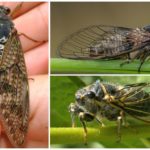
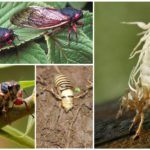
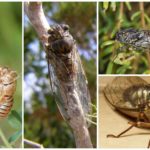
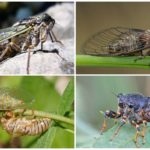
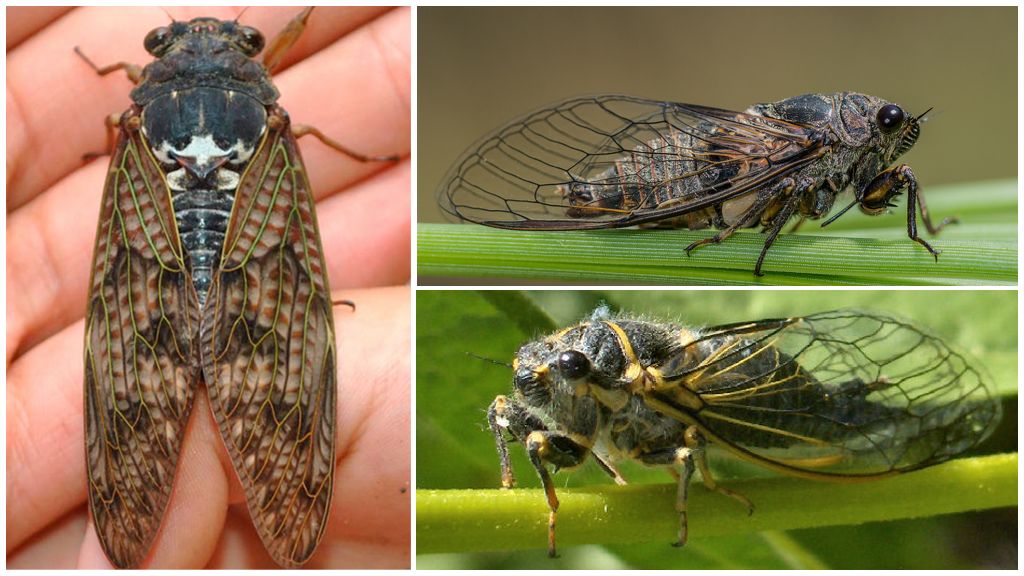
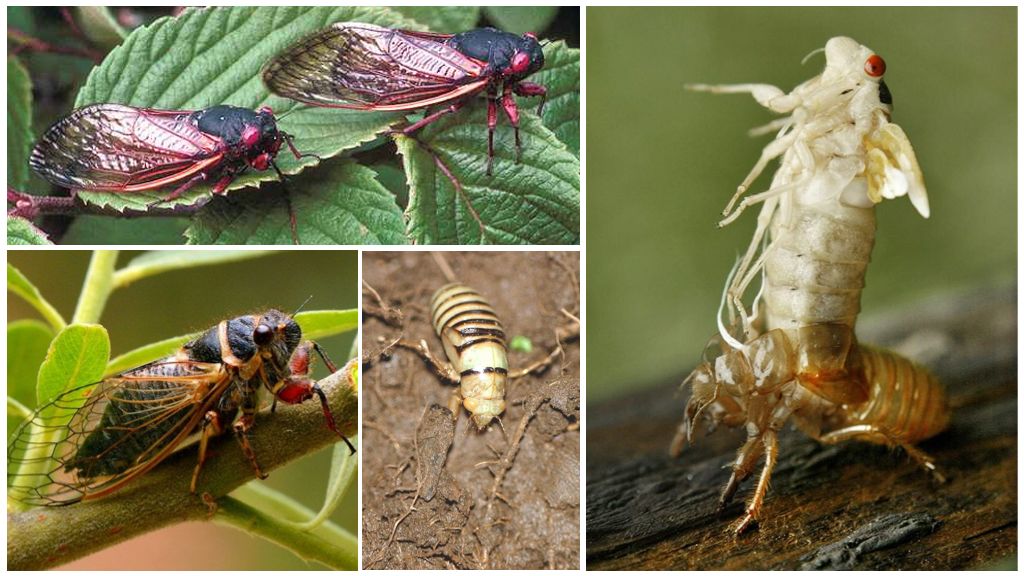
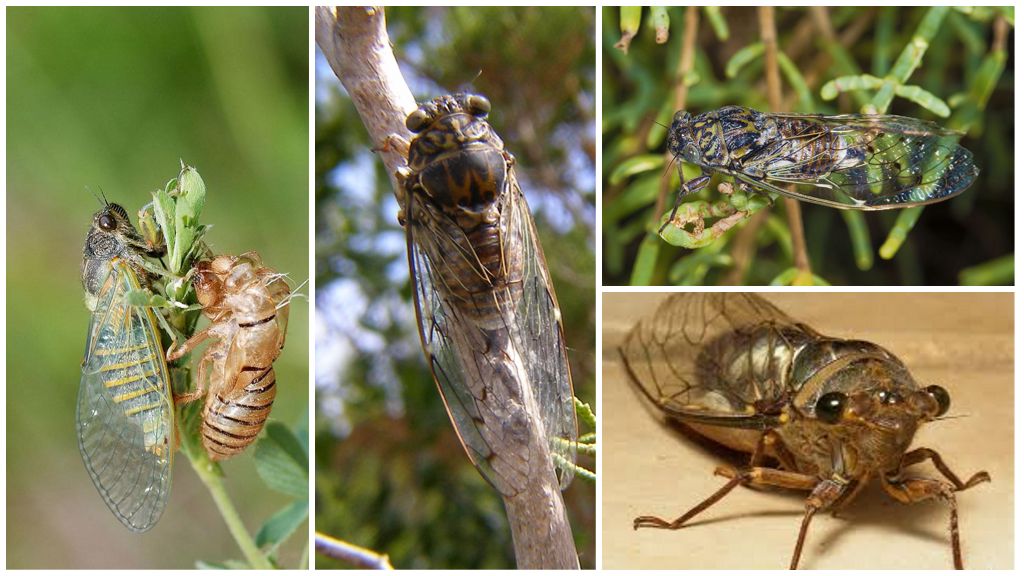
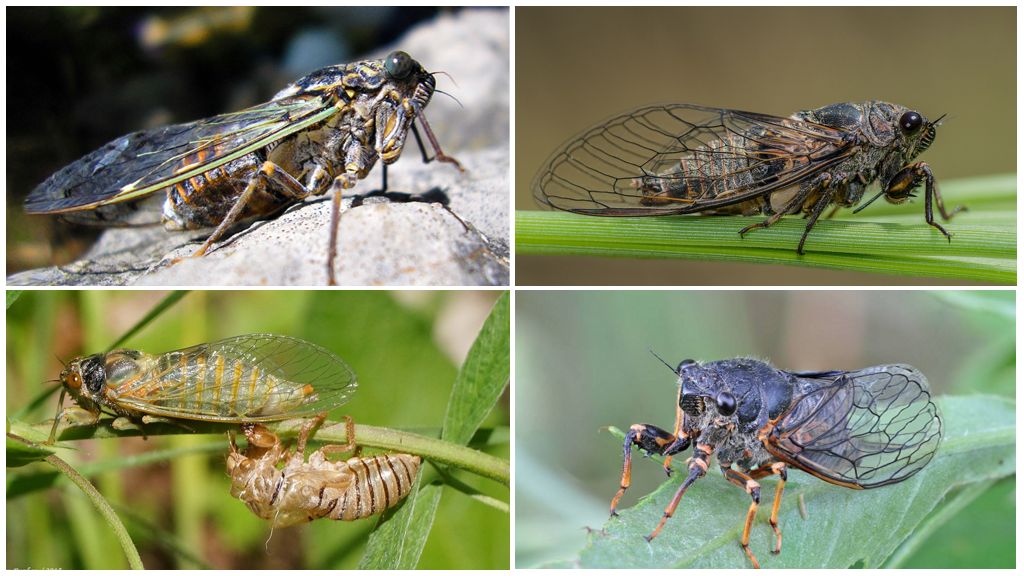

 (votes: 10, Average rating: 4.60 out of 5)
(votes: 10, Average rating: 4.60 out of 5)


